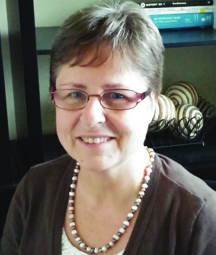By Marjan Hong, posted November 21, 2016
—
One
of my favorite books, Art Linkletter’s Kids
Say the Darndest Things! is full of hysterical thoughts, observations, and
opinions. I absolutely love how kids view and interpret their world. As a
self-professed math geek, I relish children’s many “why“ questions as
opportunities for inquiry. And, as a grandmother of six, I’m downright
dangerous when opportunities arise to explore my grandchildren’s thinking. A
few months ago I overheard a conversation between my son and granddaughter.
Seven-year-old
Ava loves all types of crafts, so this past summer her mother enrolled her in a
weeklong basic sewing class. Needless to say, she loved it! Soon after that,
Ava asked her dad to read Emily Gravett’s The
Rabbit Problem to her. On the inside of the book’s front cover, the problem
is explicitly stated: If a pair of baby rabbits are put into a field, how many
pairs will there be (a) at the end of each month and (b) after one year? The
story then begins in January with a single lonely rabbit who invites another
rabbit to his field.
Modeling
good reading habits, my son asked Ava to make a prediction about how many pairs
of rabbits there would be at the beginning of each new month. She easily made
predictions for the first few months: February? “One pair.” March? “Two pairs.”
April? “Three pairs.” May? “Four pairs.”
I
held my breath as they turned the page and read that there were five pairs of rabbits at the beginning
of May. “Wait, what?”
My
son allowed Ava to absorb the news and flip back a few pages to try to figure
out what happened. The reading continued. June? Ava conjectured, “Seven?”
Turning
the page, they read that there were eight
pairs at the beginning of June. Again she was given the opportunity to flip
back through the pages. July? Ava stated, “Thirteen.”
Turning
the page, they read that there were thirteen pairs at the beginning of July. My
son asked how she got thirteen.
I
heard Ava struggle to explain and then offer that the next number should be twenty-one.
Again, my son asked her how she determined the next number. After several
minutes, Ava explained in the only way she knew how: “It’s like the backstitch!”
My son was stunned into silence because he knows nothing about sewing. I was
stunned (and elated!) because I do. Once she was able to articulate her
connection, Ava could explain the mathematics she observed in the sequence.
I
share this story because it illustrates how easily we transition to inquiry-based
learning in our interactions with our own children and grandchildren. Obviously,
this was not a planned classroom lesson, but it highlights some important
elements of inquiry-based learning that deserve a closer look. The story also
includes evidence of what I call a beyond-objectives
mindset, which is critical to targeting our students’ leaning goals. My son’s
objectives were simple: Enjoy one-on-one time and model good reading practices
by making predictions. Clearly, his objectives were met. Would it have been OK if
Ava had not figured out the pattern of the Fibonacci sequence? I suggest that
the answer to this question is a resounding yes, because it was not one of his
objectives. However, he made specific choices that provided opportunity to go
beyond the objectives, resulting in deeper learning and surprising connections.
One critical choice was to refrain from explaining the Fibonacci sequence. Rather,
he allowed Ava time to reflect, revisit, and conjecture, thereby supporting her
in productive struggle. Another critical choice was to ask for an explanation
once Ava correctly identified other terms in the sequence, thereby strengthening
her reasoning, which eventually led to mathematical discourse.
As
teachers with thirty to forty students from diverse backgrounds and varied mathematical
experiences, can we just as effortlessly and successfully transition to a
dynamic inquiry-based learning environment in our classrooms? Is it really
possible? In the next few blogposts, I would like to explore these questions
together and consider what beyond-objectives
lessons might look like.
Marjan
Hong, [email protected],
has worked in mathematics education for nearly thirty years as a teacher,
mentor, curriculum specialist, and consultant. She is currently curriculum
content developer for Discovery Education. Her passions include access and
equity in mathematics education, empowering teachers, and inquiry-based
learning.
